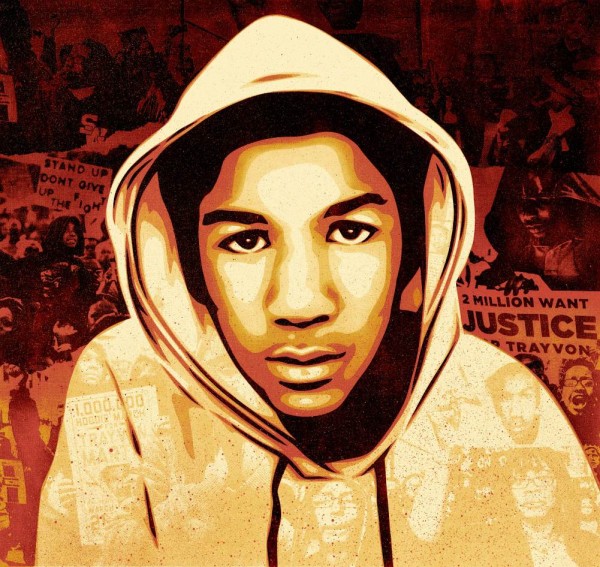TIME: Aside from having regularly smoked marijuana, Dzhokhar Tsarnaev and Trayvon Martin share little in common. Tsarnaev, of course, is the surviving suspect in the Boston Marathon bombings and Martin was the unarmed black teenager shot to death in Florida in 2012 by a man who claims he felt threatened by him. But differences in the way the media have covered their cannabis use portend a major shift in public attitudes about the drug, as well as a troubling reminder of the racism that still largely prevents us from seeing drugs as a health issue.
This week, the judge in the Martin case said his accused killer, George Zimmerman, may not use evidence related to the victim’s past marijuana use in his defense. As the New York Times put it:
Mark O’Mara, Mr. Zimmerman’s lawyer, argued that Mr. Martin’s drug use could have made him aggressive and paranoid, which the defense said might have prompted him to attack Mr. Zimmerman, 29, a neighborhood-watch volunteer.
Such an argument is contradicted by medical evidence, which shows that marijuana tends to reduce aggression. Nonetheless, the fact that metabolites of the cannabis were found in Martin’s blood made national headlines  when it was first made public. The blood test was generally seen as discrediting the victim. As his mother told the media at the time, “They’ve killed my son, and now they’re trying to kill his reputation.” Indeed, while the marijuana-related evidence was only part of a huge trove of data released, it received most of the attention. From ABC News to TIME to Rush Limbaugh, the fact that Martin had smoked pot some time in the days or weeks before the killing was seen as potentially helpful to his killer’s case that his victim had been up to no good. Now let’s consider the media’s take on the weed habit of the man suspected of carrying out the worst act of terrorism on American soil since 9/11. Here’s how a high school friend, widely quoted in the media, described him to the New Yorker’s David Remnick:
when it was first made public. The blood test was generally seen as discrediting the victim. As his mother told the media at the time, “They’ve killed my son, and now they’re trying to kill his reputation.” Indeed, while the marijuana-related evidence was only part of a huge trove of data released, it received most of the attention. From ABC News to TIME to Rush Limbaugh, the fact that Martin had smoked pot some time in the days or weeks before the killing was seen as potentially helpful to his killer’s case that his victim had been up to no good. Now let’s consider the media’s take on the weed habit of the man suspected of carrying out the worst act of terrorism on American soil since 9/11. Here’s how a high school friend, widely quoted in the media, described him to the New Yorker’s David Remnick:
‘He was a cool guy,’ Ashraful Rahman said. ‘I never got any bad vibes from him. He wasn’t a star student, but he was smart … It’s so out of character. And you have to remember — he was a stoner. He was really into marijuana. And generally guys like that are very calm, cool.’
Here’s how the Times described him, in an article headlined, “The Dark Side, Carefully Masked”:
To even his closest friends, Mr. Tsarnaev was a smart, athletic 19-year-old with a barbed wit and a laid-back demeanor, fond of soccer and parties, all too fond of marijuana. They seldom, if ever, saw his second, almost watertight life: his disintegrating family, his overbearing brother, the gathering blackness in his most private moments.
USA Today put it this way:
Friends and classmates of Dzhokhar Tsarnaev can’t grasp how the pot-smoking party boy they knew is the same young man now accused of carrying out a terrorist attack.
Meanwhile, Politico described Tsarnaev as being “more interested in blunts than bombs” and quoted a friend as saying he was a “normal pothead.” In other words, rather than portraying Tsarnaev’s marijuana use as a sign of his criminality, it is presented as a reason not to suspect him — a signal that he’s “one of us,” not some unknowable monster. The New York Times actually lists marijuana use as one of his “light side” characteristics, not as a harbinger of other criminal acts. What can account for these differences? The most obvious factor is race: Martin was black and Tsarnaev is white, and our educational and justice systems certainly treat drug use by those two groups rather differently. In white kids, marijuana use is typically dismissed as relatively harmless youthful experimentation — in blacks, it’s a reason for arrest and suspension from school. Black youths are arrested for drug crimes at a rate 10 times higher than whites, despite research finding that whites are equally or more likely to take or sell drugs. MORE

